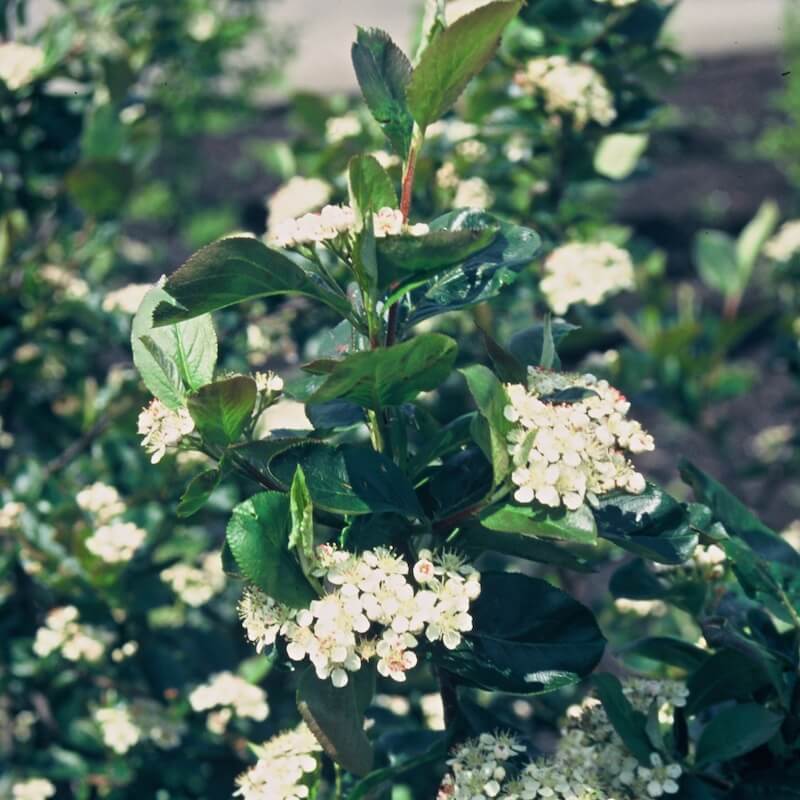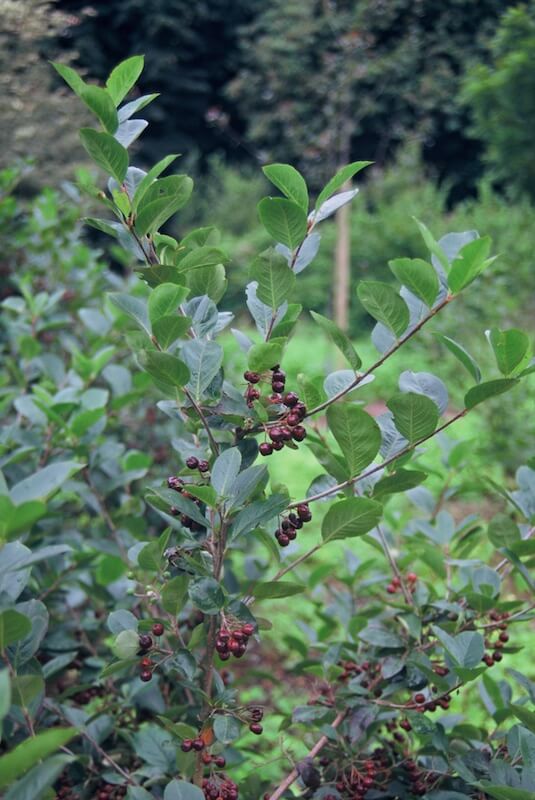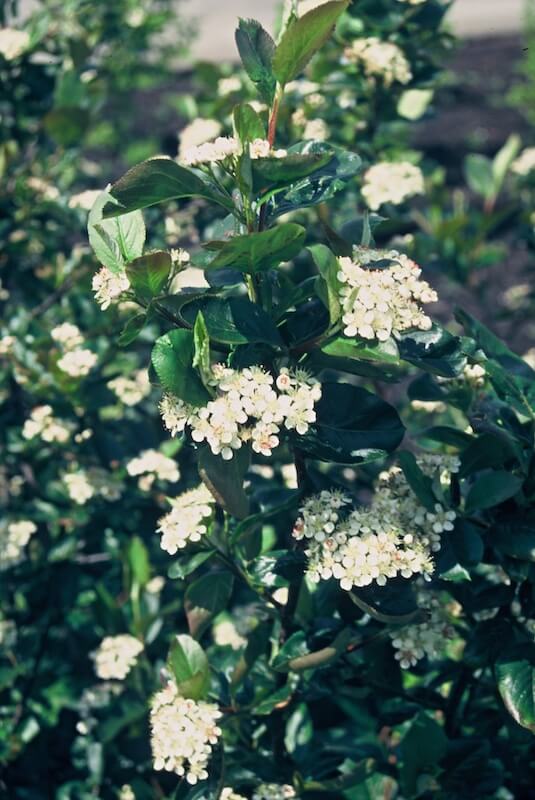
Position
- Prefers full sun for the heaviest flowering and fruiting, but will tolerate partial shade
- Ideal for mixed borders, wildlife gardens, edible landscapes, or as a hedge
- Sheltered exposure is helpful but not essential; robust and wind-tolerant when established
Hardiness
- Hardy down to about –30°C (–22°F)
- Reliably tough throughout the UK, including very cold or exposed regions
Soil
- Thrives in well-drained, fertile soils and can also grow in heavier clay or sandy types if improved
- Enjoys soil improvement with compost, leaf mould, or well-rotted manure for healthier growth
- Avoids sites that are consistently waterlogged
- Tolerates acid, neutral, or mildly alkaline soils
- Highly adaptable and suited to a wide range of garden soils across the UK
- Grab a soil test kit and ensure the perfect conditions for growth
Height
- Reaches 1.5–2 metres (5–6.5 feet) in 5–10 years
- Forms a bushy, upright shrub with an attractive, naturally rounded habit
Seasons of Interest
Additional Notes
- Mulch annually in spring with compost or organic matter to support growth and soil health
- Water during prolonged dry spells, particularly for young plants
- Prune in winter or early spring to remove any dead or weak growth and to shape as needed
- Fruits are edible, rich in antioxidants, and can be used for juices, jams, or eaten fresh (though tart)
- Generally disease resistant and requires minimal maintenance
- Excellent for wildlife, supporting pollinators in spring and birds in autumn
Aronia × prunifolia Aron - Year-Round Interest and Superfood Berries
Aronia x prunifolia Aron, often called the Danish chokeberry, is a wonderful deciduous shrub prized by gardeners. This versatile plant offers stunning white flowers, vibrant autumn colours, and clusters of red-black berries that linger well into winter. For those looking to add seasonal colour and wildlife value to their garden, this compact and spreading shrub provides both beauty and purpose.
What is Aronia x prunifolia Aron and Why Is It Called Danish Chokeberry?
Aronia x prunifolia Aron is a deciduous shrub, often known as Danish chokeberry due to its origins and close relation to other chokeberry varieties. It belongs to the Aronia genus, a group of plants known for their rich, dark berries and colourful foliage. This hybrid combines qualities from different Aronia species, resulting in a hardy and decorative shrub.
Gardeners prize the Danish chokeberry for its striking clusters of red-black berries that persist well into winter. The plant’s botanical name, Aronia x prunifolia Aron, highlights its hybrid nature and the connection to the prunifolia variety. Its compact size, spreading habit, and vibrant seasonal colours make it a valuable addition to gardens seeking both function and form.
How Does Aronia prunifolia Differ from Other Aronia Species?
While Aronia melanocarpa and Aronia arbutifolia are well-known species, Aronia x prunifolia offers unique garden benefits. Unlike other aronia species, prunifolia tends to produce more densely packed berry clusters and displays richer shades of purple and red in autumn.
The Danish chokeberry, specifically, often grows more compactly, reaching heights of approximately 150 to 200 cm, making it ideal for borders or woodland gardens. This shrub also boasts white flowers in spring that contrast beautifully with its green foliage, adding seasonal interest from early growth through to winter.
What Are the Key Characteristics of Aronia x prunifolia?
Aronia x prunifolia features many attributes that appeal to gardeners. It is a deciduous shrub with a spreading habit, filling garden spaces with lush green foliage. In spring, white blooms appear in dense clusters, offering a delicate yet eye-catching display.
Later in the year, the shrub’s foliage transforms into vibrant shades of purple and red, providing colourful autumn interest. The red-black berries appear in late summer and persist well into winter. These berries serve as an edible food source for wild birds, making the plant perfect for wildlife-friendly gardens.

How Can You Incorporate Aron in Your Garden Design?
The Danish chokeberry’s compact and spreading form makes it excellent for borders and woodland edges. Use it as a specimen shrub to create a focal point or group several plants for a dense, colourful display.
Aronia x prunifolia also suits mixed planting schemes, combining well with other shrubs and perennials. Its autumn colour and winter berries add year-round interest. Consider placing Aron in a partially shaded area to highlight its foliage and fruit while providing a welcome habitat for wild birds.
What Are the Ideal Growing Conditions for Aronia x prunifolia?
Aronia x prunifolia thrives in a variety of soil types but prefers well-drained, fertile soil. It tolerates both sun and partial shade, though full sun encourages more vibrant colour in foliage and berries.
This plant suits gardens that experience moderate temperatures, ideally between 10°C and 25°C (50°F to 77°F). It can withstand colder winters as well, with red-black berries often remaining even after leaves have fallen. Regular watering during dry spells will keep the shrub healthy and productive.
When Does Aronia x prunifolia Flower and Produce Berries?
In late spring, the Danish chokeberry produces clusters of white flowers that add fresh colour to the garden. These blooms attract pollinators and herald the start of the growing season.
By late summer and into early autumn, dense clusters of red-black berries develop. These berries persist into winter, brightening the garden when most plants have lost their leaves. This seasonal transition makes Aronia x prunifolia a dynamic plant that enhances the garden’s visual appeal for many months.
How Can You Care for and Maintain the Danish Chokeberry?
Caring for Aronia x prunifolia is straightforward, making it an ideal choice for gardeners seeking low-maintenance plants. Pruning in early spring removes any dead or weak branches, promoting a compact and healthy shrub.
Mulching around the base helps retain moisture and protect roots, especially during dry or cold weather. Feeding with a balanced fertiliser in spring supports strong growth and vibrant foliage. Watch for pests, but Aronia generally resists common garden threats.
Are the Berries of Aronia x prunifolia Edible and Beneficial?
The red-black berries of the Danish chokeberry are edible and packed with nutrients. While slightly astringent—hence the name chokeberry—they can be used in jams, jellies, and juices.
These berries are also a valuable food source for wild birds during the autumn and winter months. Their nutritional benefits make Aronia x prunifolia a functional plant that combines garden beauty with practical uses.
How Does Aronia x prunifolia Support Wildlife in Your Garden?
Beyond its ornamental appeal, the Aronia x prunifolia plant is perfect for wildlife. Birds feed on its winter berries, gaining nourishment when other food sources are scarce.
Its dense foliage and spreading habit offer shelter for small mammals and insects. Planting Danish chokeberry supports local biodiversity, helping to create a balanced and lively garden ecosystem that benefits both wildlife and gardeners.
What Are the Seasonal Changes and Visual Highlights of Aronia x prunifolia Aron?
Aronia x prunifolia Aron showcases impressive seasonal transformations. Starting with fresh green foliage in spring, the shrub soon displays white flowers that brighten any garden space.
Come autumn, its leaves turn vibrant shades of purple and red, creating a striking contrast with red-black berries. Even after leaves have fallen, the shrub’s persistent berries add winter colour. This seasonal cycle makes Aron a standout feature throughout the year.
From Darren’s Patch
Although I’m not growing Aron in my garden at the moment, it’s one I keep coming back to in my mind, not just for its striking seasonal colour, but for the sheer practicality it offers. If you’re short on space or looking to fill a border with something that works hard year-round, this is a shrub that quietly delivers. The red-black berries are a real bonus, not only for the birds but also for the gardener, especially if you enjoy experimenting in the kitchen. Its resilience and low maintenance needs make it a great choice for both beginners and seasoned gardeners. I’m seriously considering giving it a spot next year, especially in one of the more wildlife-friendly areas of my garden where I want to boost biodiversity without adding extra work.
![]()
Key Points to Remember
- Aronia x prunifolia Aron, or Danish chokeberry, is a compact deciduous shrub ideal for gardens
- It features white flowers, vibrant autumn foliage, and persistent red-black berries
- The plant thrives in well-drained soil, tolerating sun and partial shade
- Berries are edible and serve as a valuable food source for wild birds
- Aron’s spreading habit and seasonal colour suit borders, woodlands, and wildlife gardens
- Care includes early spring pruning, mulching, and occasional feeding
- The shrub supports garden biodiversity by providing shelter and food for wildlife
- Its colourful seasonal changes offer year-round garden interest from spring through winter
Aronia x prunifolia Aron flourishes in full sun or partial shade, in well-drained, improved soil of any pH, and is exceptionally hardy (to –30°C / –22°F). It matures to 1.5–2 m (5–6.5 ft) in 5–10 years, producing clouds of white flowers in May, glossy leaves with dramatic autumn colour, and nutritious black berries from August onwards. Low maintenance and wonderfully ornamental, it offers year-round garden interest and abundant wildlife value in UK gardens.
Want to learn about other shrub varieties? Read about Buddleja lindleyana here.
For more information on Shrubs for your garden, please click here.

Frequently Asked Questions
Q: What is Aronia x prunifolia Aron, and why is it called Danish chokeberry?
A: Aronia x prunifolia Aron, often referred to as Danish chokeberry or simply Aron, is a deciduous shrub prized for its ornamental and wildlife value. This hybrid between Aronia melanocarpa and Aronia prunifolia produces dense clusters of white flowers in spring, followed by red-black berries in autumn. The berries persist into winter, serving as a valuable food source for wild birds. Its vibrant foliage shifts through shades of purple and red in the fall, adding seasonal colour to gardens and woodlands, especially popular in UK gardens for its compact, spreading habit.
Q: How do I grow and care for Aronia x prunifolia Aron in my garden?
A: To grow Aronia x prunifolia Aron successfully, plant it in well-drained soil, in either full sun or partial shade. It adapts well to various garden settings, including borders and woodland areas. Feed the shrub lightly in early spring to support healthy growth, and prune after flowering to maintain a compact, bushy form. Its spreading habit allows it to fill space attractively without becoming leggy. The plant is hardy and relatively low-maintenance, making it ideal for gardeners seeking colour, structure, and wildlife benefits.
Q: Are the berries of the Danish chokeberry edible, and what is their taste?
A: The red-black berries of Aronia x prunifolia Aron are edible but typically tart and astringent, characteristic of chokeberries. While the flavour is somewhat sharp and bitter when eaten fresh, the berries are excellent for making jams, jellies, or juices. Beyond their culinary uses, these berries serve as an essential food source for wild birds during winter, thereby supporting garden biodiversity. The persistent berries and vibrant autumn foliage make this plant a popular choice for gardeners who appreciate both its aesthetic appeal and its attraction to wildlife.
Q: What are the ideal conditions for planting Aronia x prunifolia Aron in the UK?
A: In the UK, Aronia x prunifolia Aron thrives in a variety of soils, ideally well-drained but tolerant of moist conditions. The shrub prefers a position with full sun or light shade to develop its best autumn colour and berry crop. It is a hardy deciduous shrub that can withstand typical UK winters, growing to heights of between 150 and 200 cm. Suitable for woodland borders or mixed planting schemes, this colourful and compact plant adds interest throughout the seasons and supports local wildlife with its flowers and berries.
Q: Where can I purchase Aronia x prunifolia Aron (Danish chokeberry)?
A: Aronia x prunifolia Aron, is widely available at garden centres and specialist nurseries across the UK. It is also offered by many reputable online plant retailers, allowing gardeners to source healthy, well-grown shrubs conveniently. Purchasing from established suppliers ensures good quality plants with strong root systems, ready to thrive in your garden. This versatile and attractive shrub is gaining popularity due to its ornamental value and benefits to wildlife, making it a valuable addition to both amateur and professional gardens.
